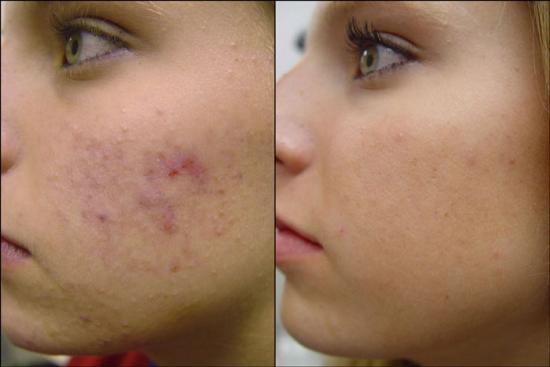
Some acne scars appear as holes, pits, or craters in the skin. Called
atrophic scars or crateriform scars, these depressed, cavity-like,
inward-directed scars are associated with a lack of tissue that
occurs when the inflammation from healed acne causes destruction
to the skin (similar to scars that often result from chickenpox). The
scar tissue contracts and binds the skin down.
Terms and descriptions related to this type of scarring will be help-
ful when talking with your dermatologist and reviewing treatment
options, because some treatments work better than others for dif-
ferent scars. Here are some more descriptive names:
Ice-pick scars: These scars are the most common acne scars
that occur on the cheeks. They’re most often small, with a
somewhat jagged edge and steep sides — like wounds from an
ice pick. They can be shallow or deep. Ice-pick scars may
evolve into depressed fibrotic scars over time.
Depressed fibrotic scars: These scars are usually quite large,
with sharp edges and steep sides.
Boxcar scars: These scars are angular and usually occur on
the temple and cheeks, and can be either superficial or deep.
They are similar to chickenpox scars.
Rolling “hill and valley” scars: These scars give the skin a
wavelike appearance. They have gently sloping rolled edges
that merge with normal skin.
No comments:
Post a Comment